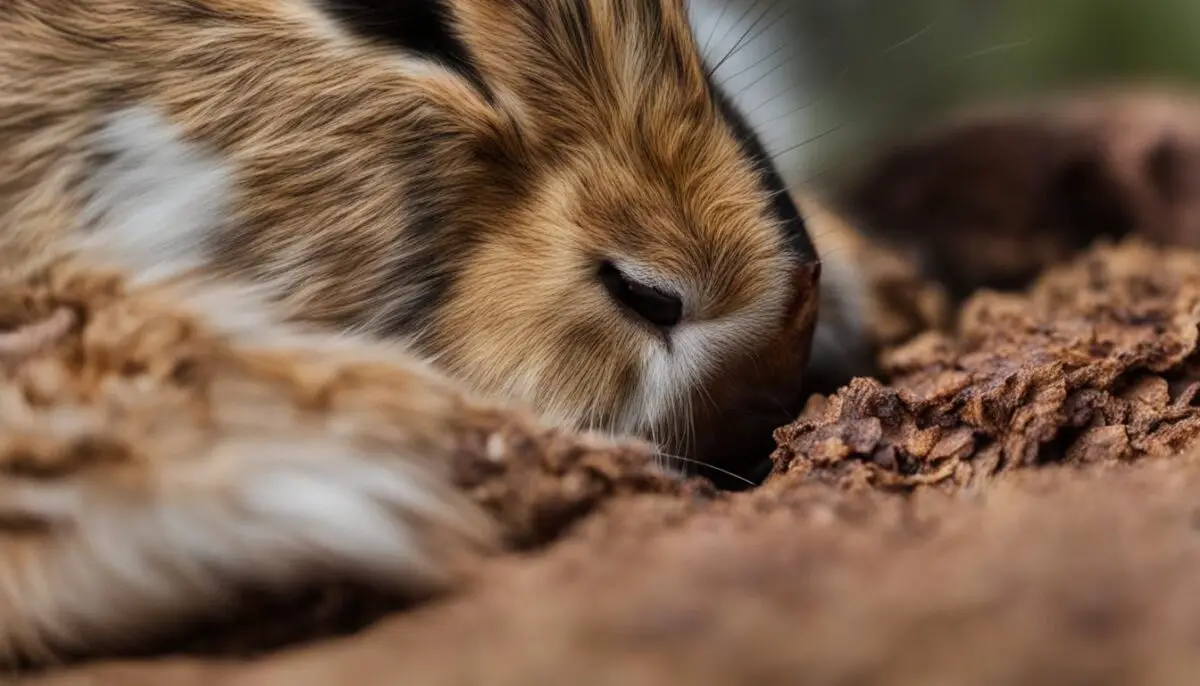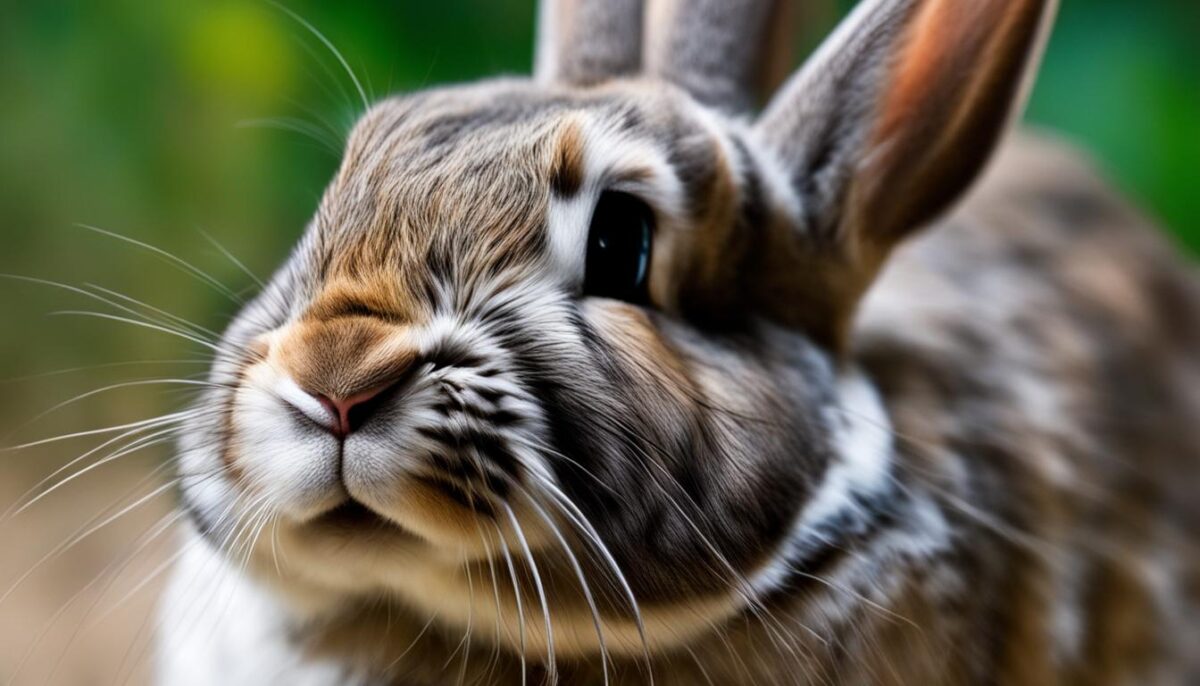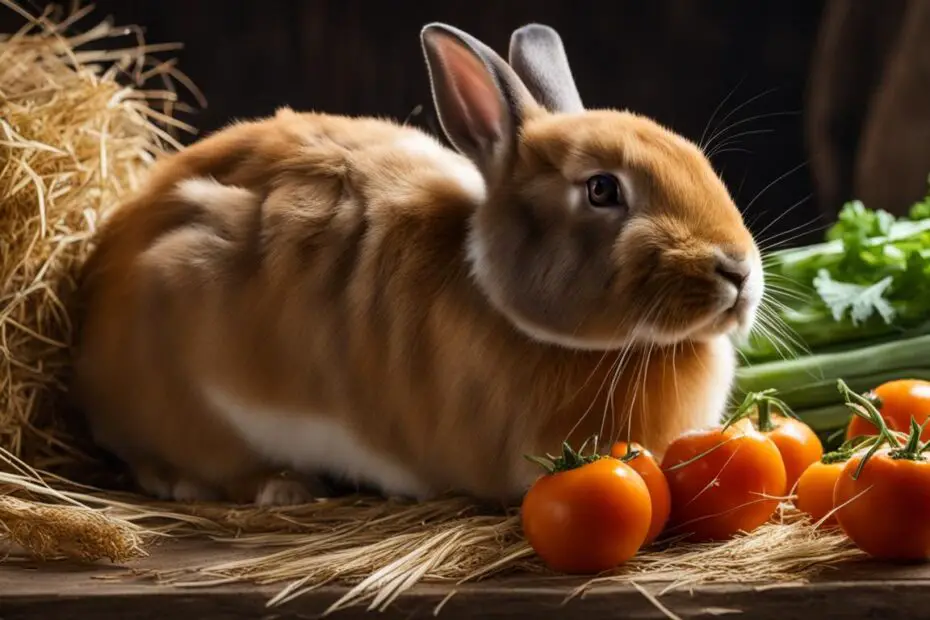As a responsible rabbit guardian, it is essential to be aware of the signs that your beloved pet may be nearing the end of their life. Unlike other animals, rabbits are masters at hiding their illnesses, making it crucial for you to pay close attention to any changes in their behavior or health. By recognizing the key symptoms that indicate your rabbit is dying, you can ensure they receive the necessary care and support during this difficult time.
If you notice any of the following symptoms in your rabbit, it is crucial to seek veterinary care as soon as possible:
- Stasis: If your rabbit’s gastrointestinal tract stops moving food through, it can lead to lethargy, discomfort, and gas buildup.
- Sore Hocks: Inflamed and raw foot soles, often caused by unsuitable flooring, can be extremely painful for your rabbit.
- Head Tilt: Also known as torticollis or wry neck, this condition can cause your rabbit to have a tilted head or difficulty balancing.
- Difficulty Breathing: Respiratory infections can impact your rabbit’s ability to breathe, leading to symptoms such as sneezing, runny nose, and raspy breathing.
- Flystrike: This painful condition occurs when flies lay eggs on your rabbit’s fur, leading to maggot infestation.
Key Takeaways
- Pay close attention to any changes in your rabbit’s behavior or health, as they are skilled at hiding illnesses.
- If you notice symptoms such as stasis, sore hocks, head tilt, difficulty breathing, or flystrike, seek veterinary care immediately.
- Proper treatment and care can often improve your rabbit’s quality of life and provide comfort during their final days.
- Preventive measures, such as suitable flooring and regular checks for skin irritation, can help avoid some of these symptoms.
- Grieving the loss of a rabbit is a natural process. Seek support and resources to help you cope with the loss and remember the happy memories shared.
Stasis
Rabbits are delicate creatures that can be prone to various health issues. One of the most common problems they may experience is rabbit stasis. Stasis, also known as gastrointestinal stasis, occurs when a rabbit’s digestive system slows down or completely stops moving food through. This condition can be quite serious and requires prompt attention from rabbit guardians.
There are several factors that can contribute to rabbit stasis, including digestive issues, stress, and tooth problems. Digestive issues, such as an imbalanced diet or a sudden change in food, can disrupt the normal functioning of the gastrointestinal tract. Stress, whether from a change in environment or a traumatic event, can also disrupt a rabbit’s digestive system. Additionally, tooth problems, such as overgrown or misaligned teeth, can interfere with proper chewing and digestion.
Recognizing the signs of stasis is crucial for early intervention. Some common symptoms of rabbit stasis include lethargy, reduced or no appetite, decreased fecal output, bloating, and discomfort. If you notice any of these signs in your rabbit, it is essential to seek veterinary care immediately.
Early treatment is key to successfully managing stasis in rabbits. A veterinarian will conduct a thorough examination, which may include palpating the abdomen, listening for abnormal gut sounds, and performing X-rays or ultrasounds to determine the underlying cause of stasis. Treatment may involve a combination of pain medication, fluid therapy, syringe feeding, gut motility medications, and addressing any dental issues.
Prevention is also vital in maintaining a rabbit’s digestive health. Providing a balanced diet, plenty of fresh water, and an appropriate amount of fiber can help prevent digestive issues. Regular dental check-ups and providing appropriate chew toys can help prevent tooth problems that may contribute to stasis.
Did you know? Rabbits have a unique digestive system. They are unable to vomit and rely on a continuous flow of food through their digestive tract.
| Causes of Rabbit Stasis | Symptoms of Rabbit Stasis |
|---|---|
| Digestive issues | Lethargy |
| Stress | Reduced or no appetite |
| Tooth problems | Decreased fecal output |
| Bloating | |
| Discomfort |

Understanding and addressing the causes of sore hocks is essential for ensuring the well-being of your rabbit. By providing suitable flooring and regular veterinary care, you can help prevent and manage this foot problem, promoting your rabbit’s overall health and happiness.
Head Tilt
Head tilt, also known as torticollis or wry neck, can be caused by various factors, including strokes, infections, or trauma. While head tilt can be a serious condition, proper treatment can often lead to a good quality of life for rabbits. It is important to seek veterinary care immediately if a rabbit shows signs of a head tilt, such as a tilted head or difficulty balancing.
| Cause | Symptoms | Treatment |
|---|---|---|
| Infections | – Tilted head – Difficulty balancing – Loss of appetite |
– Antibiotics – Supportive care – Physical therapy |
| Strokes | – Tilted head – Weakness or paralysis – Limited mobility |
– Medication – Physiotherapy – Pain management |
| Trauma | – Tilted head – Swelling or bruising – Pain or discomfort |
– Rest – Pain relief medication – Surgery if necessary |
Early diagnosis and intervention are key to improving the prognosis for rabbits with head tilt. Veterinary treatment may include diagnostic tests, such as blood work and imaging, to determine the underlying cause. Treatment options can vary depending on the specific cause, but often include medications, physical therapy, and supportive care.

The veterinarian may conduct a thorough examination of the rabbit’s respiratory system, including listening to their lungs and taking a swab or sample for further analysis. Treatment may involve antibiotics, antifungal medication, nebulization, or other supportive therapies to alleviate the rabbit’s symptoms and address the underlying infection.
It is important to create a stress-free environment for the rabbit to aid in their recovery. Ensure proper ventilation, maintain clean living quarters, and avoid exposure to allergens or respiratory irritants that may exacerbate the rabbit’s condition.
“Prompt veterinary care is essential when a rabbit exhibits difficulty breathing, as respiratory infections can quickly escalate and lead to serious complications. Early intervention increases the chances of successful treatment and a quicker recovery.”
Flystrike: Preventing Myiasis in Rabbits
Flystrike, also known as myiasis, is a serious condition that can affect rabbits. It occurs when flies lay eggs on a rabbit’s fur, which then hatch into maggots. These maggots can burrow into the rabbit’s skin, leading to pain, infection, and even death if left untreated.
To prevent flystrike in rabbits, it is important to take proactive measures and maintain a clean living environment:
- Keep your rabbits indoors whenever possible, especially during the warmer months when flies are more prevalent.
- Regularly clean your rabbit’s living area, including removing any droppings or soiled bedding.
- Inspect your rabbit’s fur and skin regularly for signs of irritation, wounds, or flies buzzing around.
- Ensure your rabbit’s fur is kept clean and dry, as damp fur is more likely to attract flies.
- Monitor your rabbit’s grooming habits and provide assistance if they are unable to clean themselves properly.
- Consider using fly repellent sprays or creams recommended for use on rabbits, but always consult with a veterinarian beforehand.
If you suspect your rabbit has flystrike, it is crucial to seek immediate veterinary care. Do not attempt to remove the maggots yourself, as this can cause further harm to your rabbit. A veterinarian will properly treat the infestation, clean the affected areas, and provide appropriate pain relief and antibiotics if necessary.
Remember, prevention is key when it comes to flystrike. By implementing these preventive measures, you can help protect your rabbit from this potentially life-threatening condition.
Expert Tip:
“Regularly checking your rabbit’s fur and skin for signs of flystrike is crucial. Pay attention to any redness, swelling, or foul odor, as these can be indicators of an infestation. Early detection and prompt veterinary care are essential to ensure the best outcome for your rabbit.”
Conclusion
Losing a rabbit can be a difficult and emotional time for their guardians. During this challenging period, it is essential to provide your beloved pet with proper hospice care to ensure their comfort and well-being. This involves creating a peaceful and calm environment, offering gentle care and attention, and providing pain management under the guidance of a veterinarian.
When the time comes, and euthanasia becomes necessary due to your rabbit’s suffering, it is crucial to seek the expertise of a veterinarian. They will ensure the process is carried out humanely, minimizing any distress for your cherished companion.
Grieving the loss of a rabbit is a natural and deeply personal journey. It is normal to experience a range of emotions, including sadness, loneliness, and heartache. Remember to allow yourself time to heal and process the loss. Seek support from understanding friends, family, and online communities who can provide comfort and empathy during this challenging period.
As you begin to navigate life without your beloved rabbit, hold onto the happy memories and the unique bond you shared. Reflect on the joy and love they brought into your life, and honor their memory in a way that feels meaningful to you. Take solace in the knowledge that you provided your rabbit with a loving home and a lifetime of care.
FAQ
What are the signs that my rabbit is dying?
The signs that your rabbit may be dying include stasis, sore hocks, head tilt, difficulty breathing, flystrike, hairballs, loneliness, and overgrown teeth or claws.
What is stasis in rabbits?
Stasis is a condition where the gastrointestinal tract in rabbits stops moving food through, leading to lethargy, discomfort, and gas buildup.
What causes sore hocks in rabbits?
Sore hocks in rabbits are usually caused by unsuitable flooring, such as wire cages or slick surfaces, as well as obesity, arthritis, or other health conditions.
What is head tilt in rabbits?
Head tilt, also known as torticollis or wry neck, is a condition where a rabbit’s head tilts or they have difficulty balancing. It can be caused by strokes, infections, or trauma.
What are the signs of difficulty breathing in rabbits?
Signs of difficulty breathing in rabbits may include sneezing, runny nose, runny eyes, and raspy or heavy breathing.
What is flystrike and how can it be prevented?
Flystrike, also known as myiasis, occurs when flies lay eggs on a rabbit’s fur, which hatch into maggots. It can be prevented by keeping rabbits indoors, maintaining a clean living area, and regularly checking for signs of irritation or wounds.
How can I provide hospice care for a dying rabbit?
Providing hospice care for a dying rabbit involves ensuring their comfort and well-being. If euthanasia becomes necessary, it should be done with the guidance of a veterinarian.
How can I cope with the loss of my rabbit?
Coping with the loss of a rabbit is a natural process. Seek support and resources to help you through the grieving process, and give yourself time to heal and remember the happy memories shared with your beloved pet.


